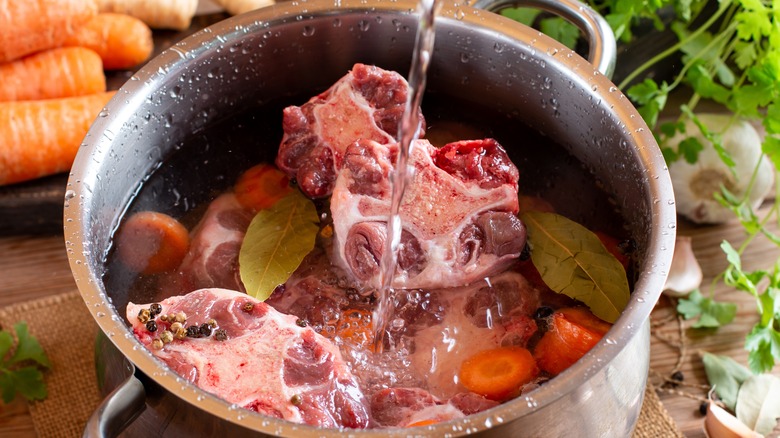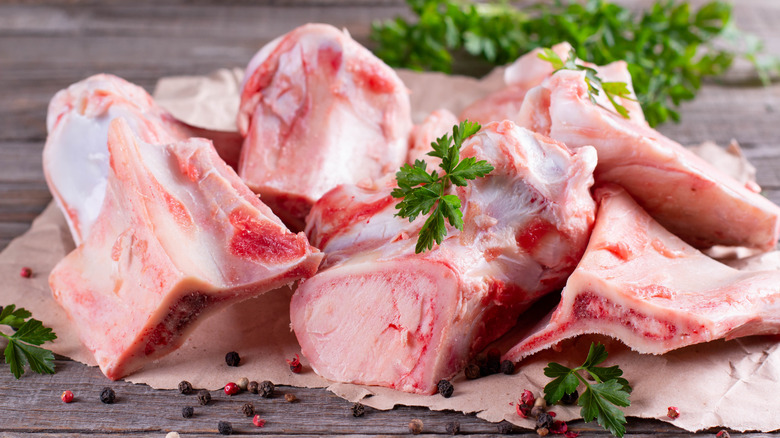Veal Vs Beef: Which Bones Are The Absolute Best For Making Stock?
In French cooking, stocks are a culinary cornerstone, packing in an abundance of flavor and richness in liquid form. In addition to building a large array of soups and stews, they're an indispensable component to several of the cuisine's five Mother Sauces. As a result, mastering the construction of these broths really unlocks the key to elevated, richer dishes. Such care especially applies to a meaty stock, which can feel a bit more intimidating than a chicken or vegetable base. It's not a particularly technical dish — it just requires thoughtful construction. And largely, that rests in selecting flavorful ingredients, which raises the question: Is it better to reach for veal or beef bones?
In France, veal is considered more classic, and it's backed up by good reason. These bones are filled with gelatin, much more so than beef bones, which creates a more full-bodied texture. As opposed to beef, the taste is more savory, but less bold, which makes it easier to employ this broth in further applications. So although more difficult to procure in the U.S., veal comes with a two-fold advantage that will elevate your French dishes.
Veal bones create a rich and savory broth
There are several tips you need to know when making any kind of broth, but remember that for a meat rendition, the magic is in the bones. You'll attain richness due to collagen, which under heat and time, transforms into gelatin. The younger the cow, the more of this protein is contained in the bones, hence why veal is a better candidate than beef. Plus, the larger the volume the better, which is why large limbs and joints are the best bones for the richest broth results.
However, at the same time, you don't want an extra-meat-laden cut for a broth starter, or else the flavor will be overpowering. So when you do procure veal bones, take off any large meaty bits still adhered. And freshness is paramount too; check for a palatable white bone color, without any faded dark tinge. You'll also want these bones broken apart into smaller pieces, which can be requested at the butcher shop.
Once it's time to prepare the broth, roast the bones to bring out the best flavor, and carefully select accompanying aromatics. Cook patiently and relish the result; there's a beautiful magic in a clean and balanced veal broth.

